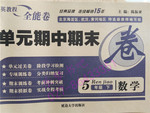ÌâÄ¿ÄÚÈÝ
C
Napoleon, as a character in Tolstoy¡¯s War and Peace, is more than once described as having ¡°fat little hands.¡¯¡¯ Nor does he ¡°sit well or firmly on the horse.¡¯¡¯ He is said to be ¡°undersized.¡¯¡¯ with¡°short legs¡¯¡¯ and a ¡°round stomach¡±. The issue here is not the accuracy of Tolstoy¡¯s description--it seems not that far off from historical accounts but his choice of facts£ºother things that could be said of the man are not said. We are meant to understand the difference of a warring commander in the body of a fat little Frenchman. Tolstoy¡¯s Napoleon could be any man wandering in the streets and putting a little of powdered tobacco up his nose¡ªand that is the point.
It is a way the novelist uses to show the moral nature of a character. And it turns out that, as Tolstoy has it, Napoleon is a crazy man. In a scene in Book Three of War and Peace, the wars having reached the critical year of 1812,Napoleon receives a representative from the Tsar(ɳ»Ê), who has come with peace terms. Napoleon is very angry£ºdoesn¡¯t he have more army? He, not the Tsar, is the one to make the terms. He will destroy all of Europe if his army is stopped. ¡°That is what you will have gained by engaging me in the war!¡± he shouts. And then, Tolstoy writes, Napoleon ¡°walked silently several times up and down the room, his fat shoulders moving quickly.¡¯¡¯
Still later, after reviewing his army amid cheering crowds, Napoleon invites the shaken Russian to dinner. ¡°He raised his hand to the Russian¡¯s¡face,¡± Tolstoy writes, and ¡°taking him by the ear pulled it gently¡.¡± To have one¡¯s ear pulled by the Emperor was considered the greatest honor and mark of favor at the French court. ¡°Well, well, why don¡¯t you say anything?¡¯¡¯ said he, as if it was ridiculous in his presence to respect any one but himself, Napoleon.
Tolstoy did his research, but the composition is his own.
Tolstoy¡¯s description of Napoleon in War and Peace is _________.
A. far from the historical facts B. based on the Russian history
C. based on his selection of facts D. not related to historical details
Napoleon was angry when receiving the Russian representative because _________.
A. he thought he should be the one to make the peace terms
B. the Tsar's peace terms were hard to accept
C. the Russians stopped his military movement
D. he didn¡¯t have any more army to fight with
What did Napoleon expect the Russian representative to do?
A. To walk out of the room in anger. B. To show agreement with him.
C. To say something about the Tsar. D. To express his admiration.
Tolstoy intended to present Napoleon as a man who is _________.
A. ill-mannered in dealing with foreign guests B. fond of showing off his iron will
C. determined in destroying all of Europe D. crazy for power and respect
What does the last sentence of the passage imply?
A. A writer doesn¡¯t have to be faithful to his findings.
B. A writer may write about a hero in his own way.
C. A writer may not be responsible for what he writes.
D. A writer has hardly any freedom to show his feelings.
¡¾Ð¡Ìâ1¡¿D
¡¾Ð¡Ìâ2¡¿C
¡¾Ð¡Ìâ3¡¿D
¡¾Ð¡Ìâ4¡¿B
¡¾Ð¡Ìâ5¡¿
½âÎö:
¡¾Ð¡Ìâ1¡¿´ÓPara1 µÚËľ䡰¡it seems not that far off from¡but his choice of facts¡± ¿ÉÖª¡£
¡¾Ð¡Ìâ2¡¿ÎÄÕÂËùÊöÖ®¹ÊÊ£¬ÊÇΪÁË¿Ì»ÄÃÆÆÂØ°®Ãæ×Ó¡¢ÕùÇ¿ºÃʤµÄÈËÎïÐÔ¸ñ¡£
¡¾Ð¡Ìâ3¡¿Ç°Ò»¶ÎÌá¼°£¬¶íÂÞ˹ʹÕß´øןÍƽÌõÔ¼µ½À´£¬Ê¹µÃÄÃÆÆÂØÍõÕß×ðÑÏÊÜËð£¬Òò´ËÓòÍʱ£¬ÄÃÆÆÂØÏë½è×Å¡°taking him by the ear pulled it gently¡¡±¸øʹÕßÒ»¸öÏÂÂíÍþ¡£
¡¾Ð¡Ìâ4¡¿´ÓÄÃÆÆÂؽӼû¶íÂÞ˹ʹÕßһʣ¬¿ÉÖªÄÃÆÆÂØÊÇÒ»¸öºÃÇ¿¡¢¶ÔȨÁ¦ºÍ×ðÑÏ¿ñÈȵÄÈË¡£
¡¾Ð¡Ìâ5¡¿¡°findings¡±´Ó¡°research¡±ÖÐÀ´£¬Òâ˼ÊÇ£¬¼´Ê¹µ÷²é·¢ÏÖʷʵÊÇÕâÑù£¬µ«×÷ÕßÒ²²»ÐèÒªÔÔ±¾±¾µØÕÕ°áÊÂʵÀ´½øÐд´×÷¡£

 ÖǻۿÎÌÃÃܾí100·Öµ¥Ôª¹ý¹Ø¼ì²âϵÁдð°¸
ÖǻۿÎÌÃÃܾí100·Öµ¥Ôª¹ý¹Ø¼ì²âϵÁдð°¸ µ¥ÔªÆÚÖÐÆÚÄ©¾íϵÁдð°¸
µ¥ÔªÆÚÖÐÆÚÄ©¾íϵÁдð°¸